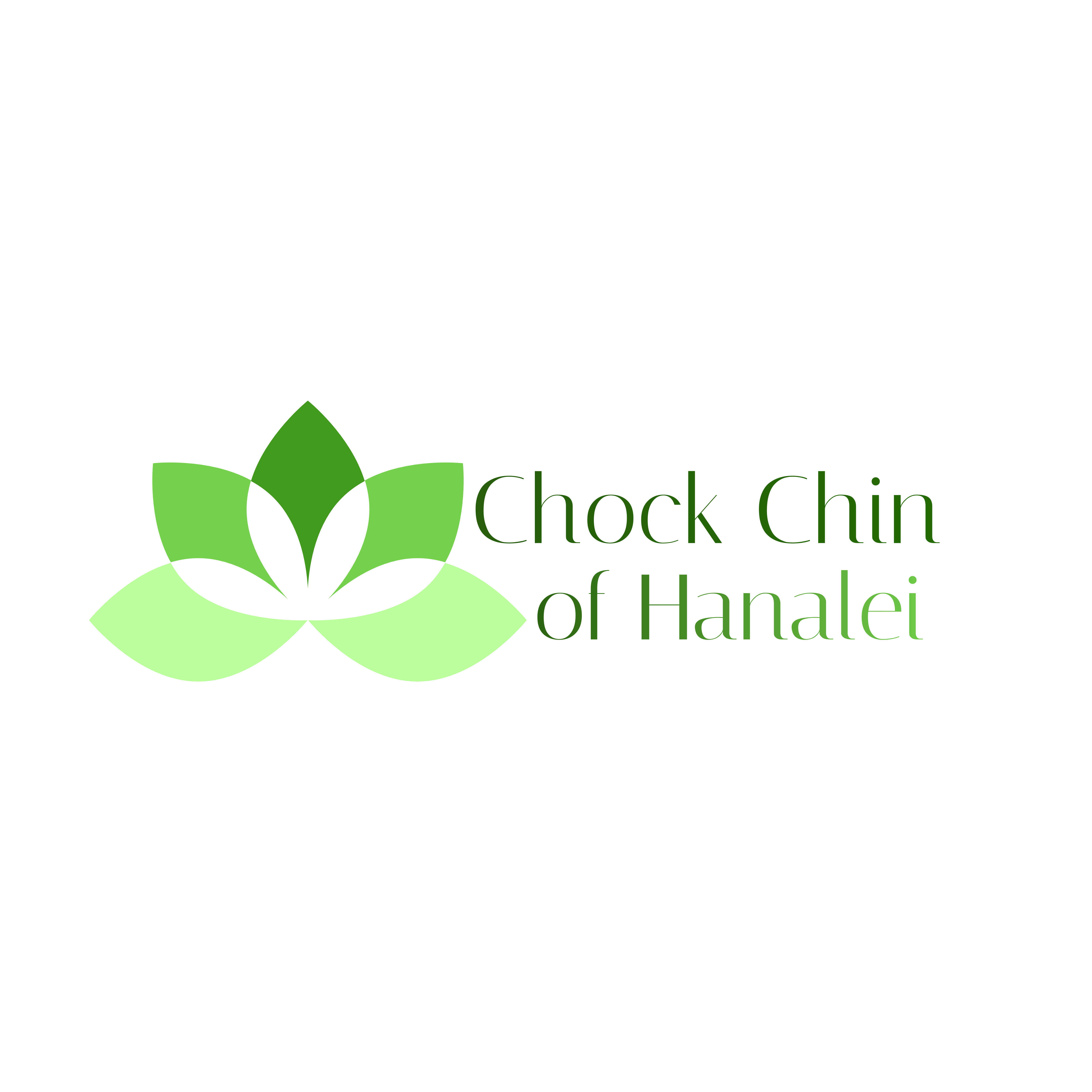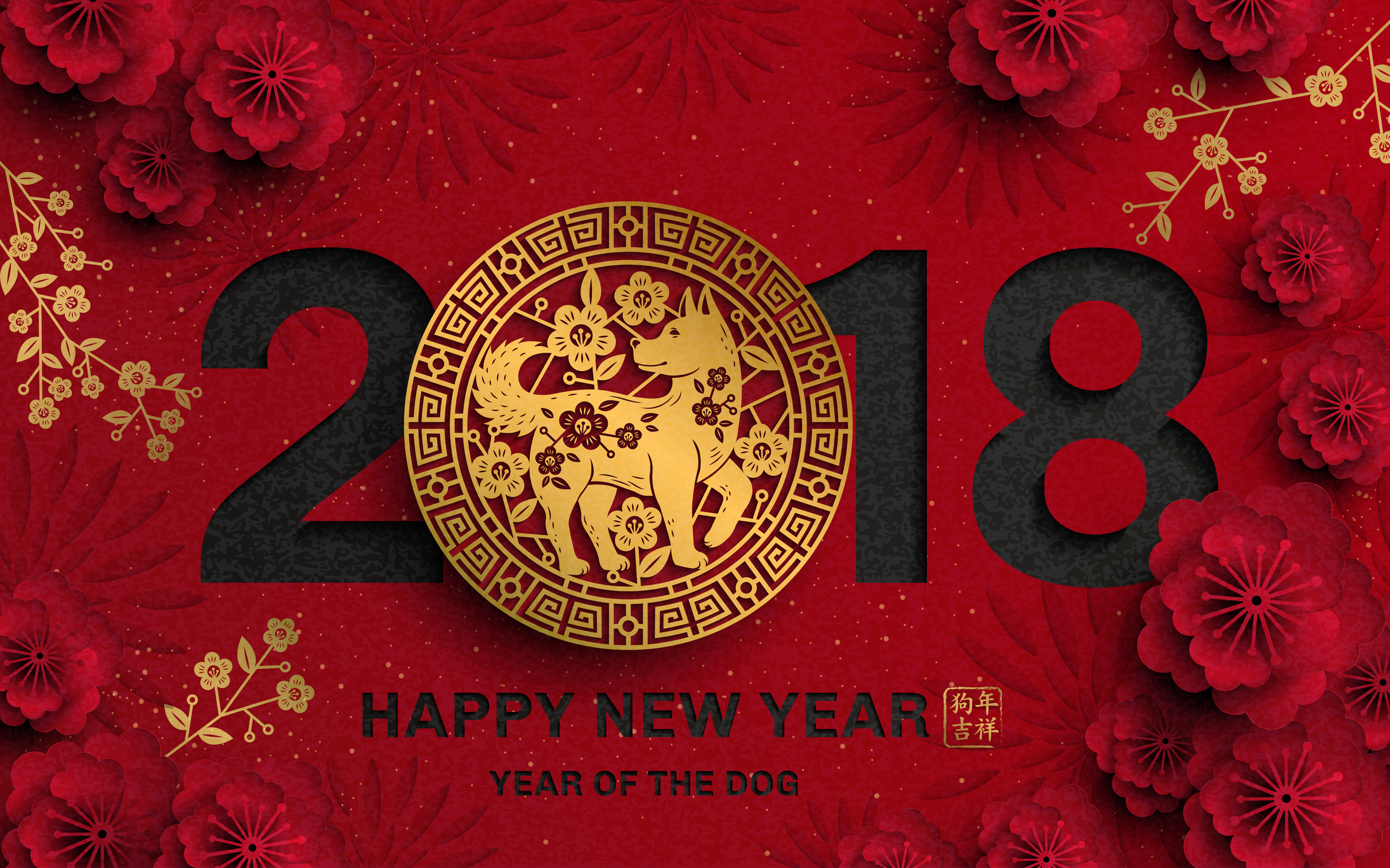The Chinese New Year arrived on 16 February 2018. This is the 4715th Chinese year.
According to the Chinese horoscope calendar, 2018 is the Male Earth Dog year. The color brown is associated with the earth, so another name for 2018 is the Year of the Brown Dog. According to Chinese horoscope theory, Male Earth is connected with mountains. The sign of 2018 Male Earth Dog year is two mountains side by side, or one mountain beyond (behind) another one.

Galen Chock, Wayne Chock Jacques, Steven George Chock — these are the living heirs to the Chock clan dynasty.
This year we were in the mountains of Denver, Colorado visiting my brother Galen and his family when Chinese New Year occurred. This trip was planned primarily to meet the son of our half-brother, Gordon Chock.
This son was not known to us as we were growing up, since our father died when we were little children, and Gordon died when his son was less than a year old, and we did not learn a lot about Gordon from our mother.
But we located him in January 2018 through the wonderful magic of Ancestry.com and the fact that his sister-in-law, Terri Jacques, had uploaded the family tree where I could find it. She is the one who helped us connect (thanks, Terri!!!).

Galen Chock, Steven G. Chock, Wayne Chock Jacques, Susan Chock Salgy
It seems perfectly appropriate that our first meeting with Wayne Chock Jacques (his mother remarried and he was adopted by his step-father) took place during the Chinese New Year festival season when families gather together.

Galen Chock and Susan Chock Salgy waiting to meet our nephew, Wayne Chock Jacques at Dazzle Denver 2018
Unfortunately, Wayne couldn’t stay long in Denver — he was on tour with Slaid Cleaves and they had another gig in New Mexico the next night. So we couldn’t take him out for Dim Sum to celebrate with us.
We met him the morning after the Slaid Cleaves show in his hotel room and we looked at pictures of Gordon and Wanda, and shared stories.
It was a marvelous experience to fit the pieces of our history together. Our father, George F Chock, is Wayne’s grandfather. The last time Wayne saw him (as far as we can tell) was at Gordon’s funeral. There are several photos at the cemetery with our dad holding baby Wayne — who was less than a year old when his father died. Wayne knew very little about his father’s family until he met us.
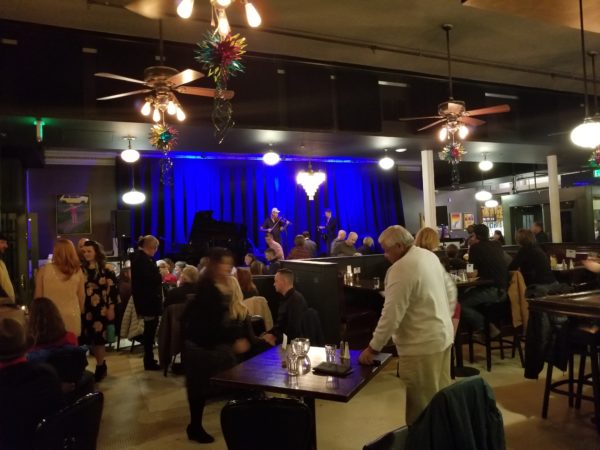
Wayne “Chojo” and Slaid Cleaves warming up before the show.
Galen, Colleen, Ric and I went to a great restaurant in Denver for Dim Sum on New Years Day – and were treated to a wonderful dragon dance in the parking lot out front after we ate.
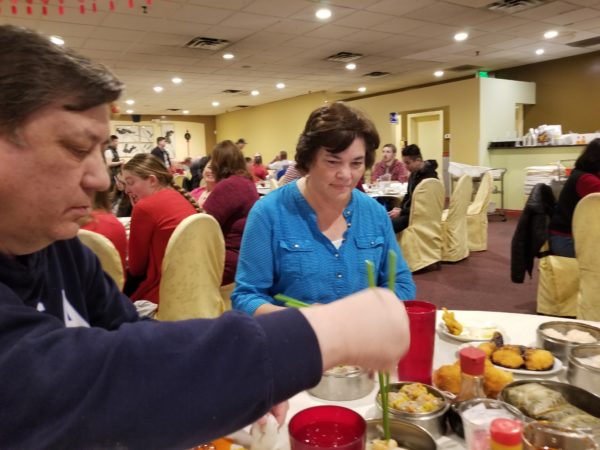
Galen and Colleen Chock eating Dim Sum
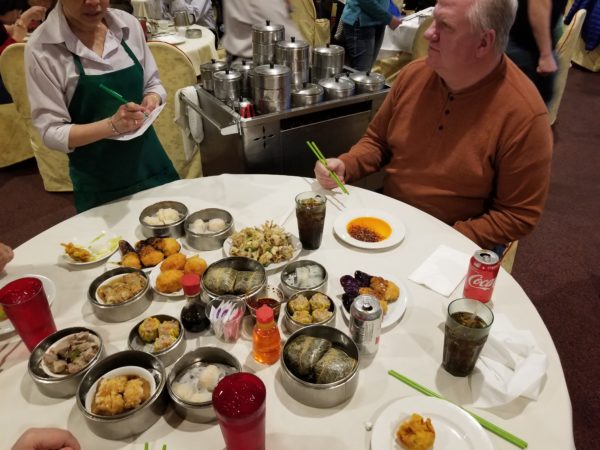
Ric Salgy ordering more
About Chinese New Year
Chinese New Year is also called Spring Festival, and is one of the most important festivals in the Chinese calendar. In China, it is the time for families to gather together — similar to the Christmas holiday season for Westerners. Most employees in China take a week off, and students get a month of vacation.
The festival originated during the Shang Dynasty (17th-11th century BC). It was observed to fight the monster Nian, who ate children and livestock. The monster was afraid of the color red and loud sounds. So the people decorated their homes with red and set off firecrackers to frighten it away.
Food Traditions
Check out this great little YouTube video to see What to Eat for Chinese New Year – 11 Recipe Ideas, plus How to Make Lotus Root Soup (莲藕汤)
I’m particularly fond of this because she is from Guangdong (yay!) and so she is explaining the way our clan would do it. Also, she makes Lotus Root soup, which was a big favorite of Chock Chin’s family, and a primary reason he created the famous Hanalei Lotus Pond in the first place.
Giving Red Envelopes
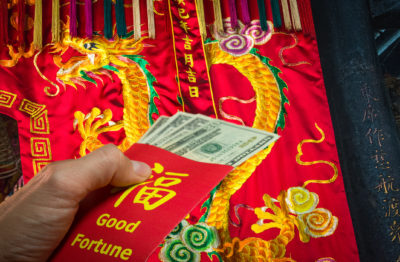 One fascinating tradition at Chinese New Year is the giving of Red Envelopes. We never did this in our home — our father did not introduce us to any of the Chinese festivals and traditions — but it is very likely that Chock Chin and his wives continued that tradition in their household in Hanalei.
One fascinating tradition at Chinese New Year is the giving of Red Envelopes. We never did this in our home — our father did not introduce us to any of the Chinese festivals and traditions — but it is very likely that Chock Chin and his wives continued that tradition in their household in Hanalei.
The wage earners of the family are expected to give money wrapped in red (signifying good luck) to the non-earning members of the family. This usually means the children and the elders. There is a specific protocol that governs how much money to give (based on your personal wealth and your relationship to the recipient) and how to present and receive the envelopes.
This is a significant expense — similar to the budget for Christmas gifts Western families give. The amount varies based on the givers’ financial status, of course. But it is a way to show your prosperity so most traditional Chinese don’t skimp on the amounts. A wage earner is expected to give “lucky money” to all of their kids, elders and relatives, but lucky money seldom is given to them.
Suggested parameters for the amounts:
- Children – $200-$1000
- Children of your acquaintances — $50-$100
- Parents and grandparents – $500-$2000
- Elder relatives of extended family – $300-$1000
- Employees – $50-$500
In China, people will give Red Envelopes at weddings, birthdays and the birth of a baby. It is the way Chinese wish each other good luck at life’s most important occasions.
